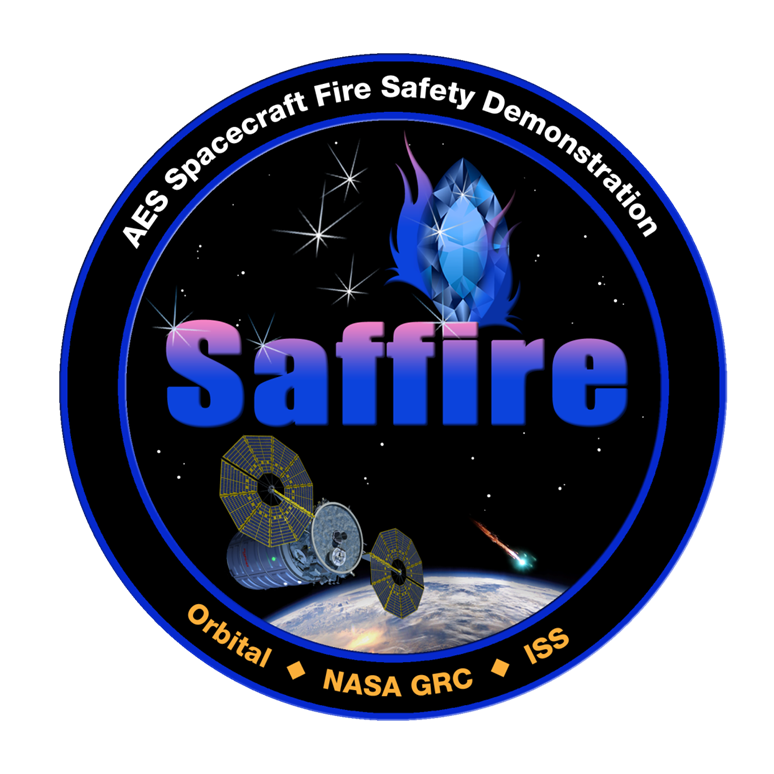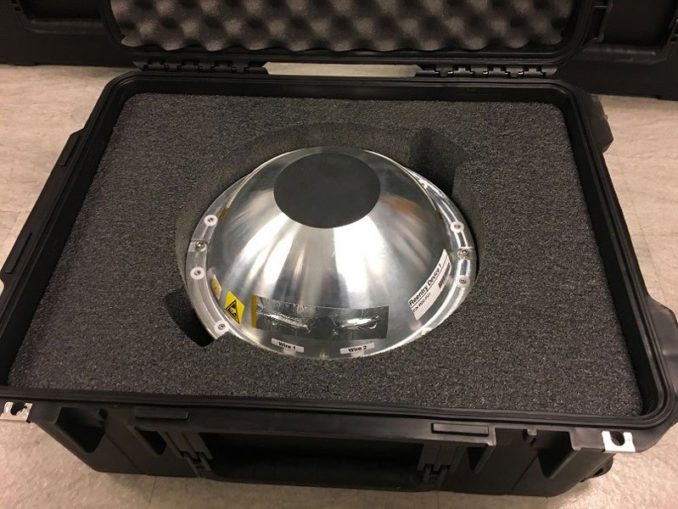CAPE CANAVERAL — The Cygnus commercial logistics vehicle departed the International Space Station this morning for a week-long free-flight filled with autonomous science tasks before re-entry.
Owing to a rejiggered schedule that optimizes astronauts’ workload, the unberthing occurred six weeks ahead of the original plan. A brief window opened in the crew’s timeline, and flight controllers decided to squeeze in the Cygnus release now instead of waiting until July 16.
The timing became available when bad weather scuttled the launch of the next SpaceX Dragon cargo ship’s launch from Kennedy Space Center on Thursday, delaying its arrival at the station until Monday.
After closing up the hatchway into Cygnus on Saturday, 16 electrically-driven bolts disengaged early this morning to free the vessel from the Earth-facing side of the Unity connecting hub. The 58-foot-long Canadarm2 then maneuvered the metallic-clad ship into the imaginary departure box.
Flight engineer Jack Fischer, from the robotics workstation in the multi-window cupola module, commanded the arm to let go of Cygnus at 9:10 a.m. EDT (1310 GMT) while flying 250 miles over the South Atlantic.
“Godspeed and fair winds, S.S. John Glenn. It has been an honor,” Fischer radioed.
The craft logged 43 days, 3 hours, 5 minutes at the station from arm grapple till arm release.
Cygnus then began firing thrusters in a retreat pattern to move away from the station, quickly separating to a safe distance.
The cargo ship, ceremonially dubbed the S.S. John Glenn, was the seventh resupply mission by Orbital ATK of Dulles, Virginia, under NASA’s commercial logistics-delivery program.
Glenn, the first American astronaut to orbit the Earth in February 1962, died in December at age 95.
A United Launch Alliance Atlas 5 rocket boosted this freighter into space from Cape Canaveral on April 18 and it arrived at the station April 22 to deliver 7,443 pounds of cargo, including over 2,000 pounds of science experiments and hardware.

After the astronauts unloaded the hardware delivered, they filled the empty craft with 4,300 pounds of garbage and no-longer-needed materials and hardware to be taken away from the station’s living quarters.
“It’s like six people living in a five bedroom house and no one is taking out the trash. It has to go out sometime and so Cygnus, with its big volume, provides a lot of capability for getting that trash off the ISS,” said Frank DeMauro, Orbital ATK’s vice president and general manager of its Advanced Programs Division in the Space Systems Group.
“While certainly delivering the cargo is the glorious part, I think removing the disposable cargo, in a way, is extremely important.”
Cygnus will spend the next week as a free-flying spacecraft, conducting the SAFFIRE 3 fire experiment this afternoon, downlinking the voluminous data and video that will be recorded during that test, and deploying four small LEMUR-2 satellites on Thursday from an altitude about 50 miles higher than the station for meteorology and ship tracking.
Re-entry into the South Pacific is planned for next Sunday, June 11.
“After another successful stay at the International Space Station, we now enter the next phase of the mission which marks the third time Cygnus has been used as a research platform for science experiments in space,” said Frank Culbertson, President of Orbital ATK’s Space Systems Group.
“Our ability to demonstrate expanded capabilities for Cygnus beyond its core cargo delivery function shows a level of versatility and flexibility with a solid track record of mission success for our customers.”
Cygnus will host the third of three initial-generation spacecraft fire safety experiments, called SAFFIRE, to study the behavior of flames and combustion in microgravity for future capsule designers. Previous Cygnus freighters housed SAFFIRE burns on two flights last year. This test will use one large piece of material to burn, but apply lessons from the earlier experiment runs.

SAFFIRE is a large, self-contained experiment stowed in the back of the Cygnus module. The blaze is ground-commanded, which is expected to occur later today.
“As the first chance to actually study a realistically scaled fire, the SAFFIRE experiments have provided valuable insight into fire behavior inside a confined low-gravity environment,” said David Urban, SAFFIRE principal investigator.
Sensors record the ambient temperature and the oxygen and carbon dioxide concentrations, two video cameras provide top views of the entire sample, thermocouples are woven into the sample and a radiometer measures the heat given off.
The flame propagates over a panel of thin material approximately 0.4 m wide by 0.94 m long (15.7 x 37 inches) to quantify flame development over a large sample in low-gravity.
Cygnus will remain in orbit for several days until all of the data and imagery recorded during the experiment are downlinked to the ground.
The next-generation of the experiment is being designed for flights in 2019 as SAFFIRE 4, 5 and 6.
“SAFFIRE 4-6 will extend the research by including larger, more energetic fires and by testing post-fire cleanup systems,” said Urban.
One final science objective for this Cygnus — known as the Thermal Protection Material Flight Test and Reentry Data Collection (RED-Data2) — is planned during the atmospheric plunge next week.

A company wanting to develop a family of re-entry vehicles to return scientific research samples to Earth from the space station will get a demonstration test at the end of the Cygnus flight when it brakes from orbit.
“For this experiment, we are flying three different probes and we have three new heat shield materials that NASA is wanting to get flight-test data for,” said John Dec, principle investigator of the RED-Data 2 experiment at Terminal Velocity Aerospace in Atlanta.
“The primary data that we are attempting to collect is temperature data from thermocouples that are embedded in the heat shield of each probe.”
The three materials being put to the test: A new form of Avcoat that will be used on Orion human spacecraft, the others, developed by the NASA Ames Research Center, are the lightweight Conformal Phenolic Impregnated Carbon Ablator (C-PICA) and Conformal Silicone Impregnated Refractory Ceramic Ablator (C-SIRCA).
“It’s kind of like a lawn dart without the stick,” Dec said of the probes. “The RED-Data probes are only about 9 inches in diameter and weigh about 5.5 kilograms.”
Kept inside the Cygnus throughout its mission, the three soccer ball-sized RED-Data-2 probes will be dispersed once the freighter breaks up during re-entry. Each probe will record vehicle location, temperature, acceleration, pressure and gyroscopic data seen during the fiery plunge back to Earth.
“When Cygnus does its de-orbit burn, it will start to re-enter the atmosphere and that’s when we begin to collect our data. We use the accelerations to determine whether or not we’re actually starting to re-enter. When Cygnus breaks up, our vehicles are then released into the free-stream flow and that’s really when our experiment begins,” Dec said.
“We have to wait to emerge from the ionization blackout, up until then we are storing data onboard. As soon as we emerge from the blackout, we use the Iridium satellite network to transmit all of our data from our vehicles to the Iridium network and then down to us at the ground station. We never physically recover vehicles, they land in the ocean, but we do get the data back.”
The probes use a 45-degree sphere-cone geometry that is designed to always right itself and orient nose-first within a couple of seconds.
“This shape is very easily scaled up in size. So what we foresee in the future is to have a sample-return capability. It would be an on-demand type of down-mass capability for the space station…That’s really where our future direction is going is to develop a vehicle big enough to bring samples back,” said Dec.
The next Cygnus to visit the station is planned for September, launching atop Orbital ATK’s own Antares rocket from Wallops Island, Virginia.
See earlier OA-7 Cygnus coverage.
Our Atlas archive.



